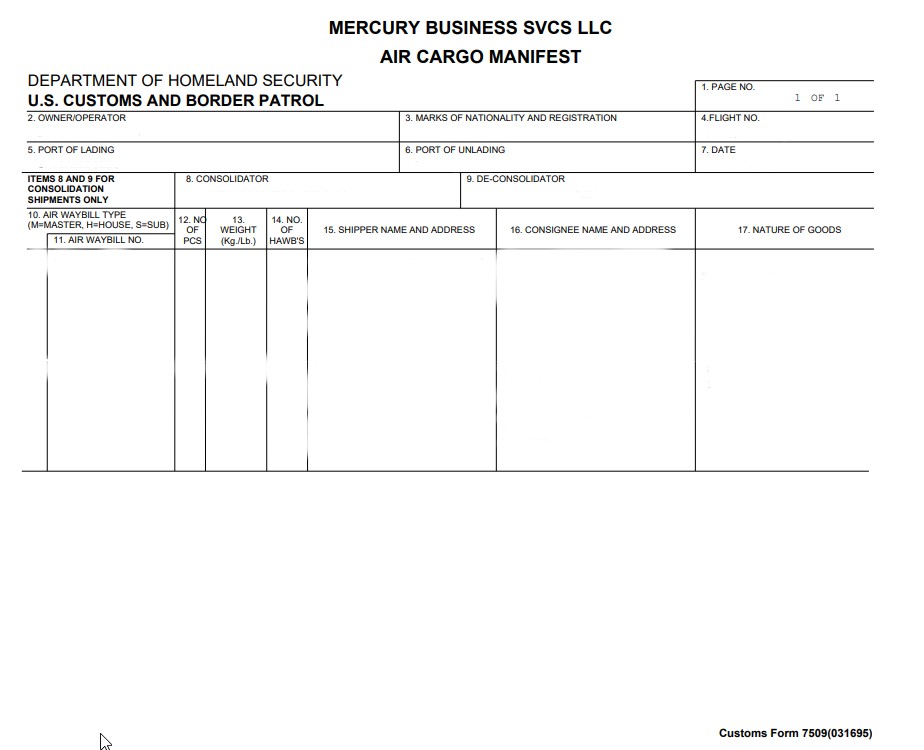Understanding Air Cargo Manifests: A Key Component of International Logistics
An air cargo manifest contains detailed information about the goods being transported, including the origin, destination, and contents of the shipment. Air cargo manifests are required by law in many countries and are used by customs authorities to track the movement of goods and to ensure that all goods are properly declared. These manifests are essential for ensuring the safety and security of air cargo shipments and ensuring that they are delivered to the correct destination.
 In the United States, the Customs Form 7509 (source: cbp.gov) is used for the air cargo manifest. This form is utilized by the United States Customs and Border Protection (CBP) to oversee and track all air cargo that enters or exits the country.
In the United States, the Customs Form 7509 (source: cbp.gov) is used for the air cargo manifest. This form is utilized by the United States Customs and Border Protection (CBP) to oversee and track all air cargo that enters or exits the country.
This document is also used by airlines, freight forwarders such as Mercury, and other stakeholders in the logistics chain to track and manage your shipment. Customs Form 7509 is typically completed by the airline or freight forwarder and must accompany the cargo throughout its journey.
The form contains various sections that require accurate and comprehensive information. These sections include the flight details, such as the airline name, flight number, and date of arrival, nature of goods, etc. Additionally, the form requires the shipper's and consignee's contact information, including their names, addresses, and telephone numbers (see screenshot sample above of an air cargo manifest).
Mercury's Logistics Services
We assist our clients in creating accurate air cargo manifests as well as all other required documentation for air cargo transport. We are well-versed in the regulatory logistics requirements, ensuring that all necessary information is included in the manifest.
We verify the accuracy of the information and ensure that it complies with all applicable laws and regulations before your products are shipped. Mercury is a TSA Indirect Air Carrier (IAC) and can also help you become a Known Shipper.

